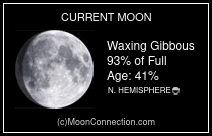
Money Magic Workshop
Money magic is an all-encompassing term for rituals done with the intention of attracting wealth, abundance, and prosperity. Cultures all around the world have different forms and practices, some closed and some not. Here are a few that are still practiced to this day:
Feng Shui - an ancient Chinese practice that’s intention is to use energy forces to harmonize individuals with their surrounding environment. Modern uses of Feng Shui include aspects of money magic, like using the fundamentals to decorate and arrange your business office to attract and generate prosperity. Some other examples are:
Decluttering (clutter blocks the flow of energy)
Fixing and/or replacing broken items (they symbolize negativity)
Identifying the “wealth corner” in whichever room (the southeast corner)
Placing items that symbolize wealth and prosperity in the wealth corner like: Chinese fortune coins, three-legged toad, water, plants (Chinese money plant)
Using colors like red, green, and gold
Correspondences
Colors: green, red, gold, silver
Herbs/flowers/spices/trees: alfalfa, allspice, ash, basil, bay leaf, benzoin, bergamot, bladderwrack, calendula, catnip, cedar, chamomile, cinnamon, clove, clover, coltsfoot, dock root, echinacea, galangal root, gentian, ginger, high john, holly hock, irish moss, jasmine, lemon balm, lilac, meadowsweet, mint, motherwort, mustard seed, myrrh, nutmeg, oak, orange (peel & flower), patchouli, pine, poppy seed, sandalwood, sheep’s purse, star anise, strawberry leaf, thyme, vervain, woodruff
Food (from many different cultures and traditions)
Lentils - (Brazil, Germany, Italy) said to resemble coins, lentils represent prosperity, they enlarge as you cook them which signifies growing wealth and are traditionally served as the first meal of the year
Noodles - (China, Japan, South East Asia) long noodles symbolize long life (don’t break them until you’re chewing them!)
Raisins & grapes - (Spain, Portugal) “the twelve grapes of luck” is a New Year’s Eve tradition thought to bring a year’s worth of prosperity and good fortune, each grape represents one prosperous month
Cabbage - (Sweden, Germany, Ireland) is associated with luck and fortune because it is crisp and green like money (even when eaten as sauerkraut)
Peas - (America, Europe) green peas are green (money!) and are round (coins!), black-eyed peas have been considered lucky in the South since the Civil War and are a common food eaten on New Year’s
Greens - (everywhere) they’re green! Collard greens specifically in the South (America)
Cornbread - (America) represents a mountain of gold
Pomegranates - (Egypt, Turkey, Greece) is associated with abundance, health, rebirth, renewal, fertility, and good luck
Pork - (Germany and Eastern Europe) a favored meat for sacrifice, they represent abundance, hard work, and stability
Fish - (America, Denmark, Italy, Poland, Germany) their scales (sometimes saved for good luck) look like coins, and they’re always swimming forward which symbolizes progress (schools swimming symbolize abundance)
Root vegetables - (everywhere) they are connected to the Earth and represent a connection to the material world (abundance) the roots represent stability
Cake - represents the sweets of labor
Nuts - cashew (Vietnam): prosperity, chestnut (China): abundance, hazelnut (Europe/Ireland): abundance, macadamia nut: abundance, pine nut: prosperity, pecan: prosperity, walnut (Hindu, Judaism): abundance, luck
Crystals
Citrine: abundance, success, manifestation, wealth, willpower
Pyrite: wealth, abundance, good luck, focus, power
Green aventurine: luck, prosperity, wealth, courage, confidence
Clear quartz: amplification, clarity, perseverance, growth, manifestation
Tiger’s eye: focus, stability, motivation, good luck, prosperity
Jade: luck, attraction
Carnelian: motivation, courage
Sunstone: confidence, leadership, power
Red jasper: motivation, willpower, stability, energy
Malachite: growth
Garnet: energy, blockages
Hindu practices focus on deities, charity, and the home:
Vastu Shastra is a traditional Hindu system of architecture and is believed to create a positive environment and attract prosperity
Making a Kalash (a metal pot used in ceremonies for offerings to deities) for Lakshmi with fruits, coconut, banana, doob-grass, amla, curd, turmeric, flowers, incense, and coins
Ancient Egyptians used oils to anoint and attract prosperity
Ancient Celts had seasonal fire rituals to symbolize vitality and strength and routinely blessed/anointed soil and crops for fertility and abundance










